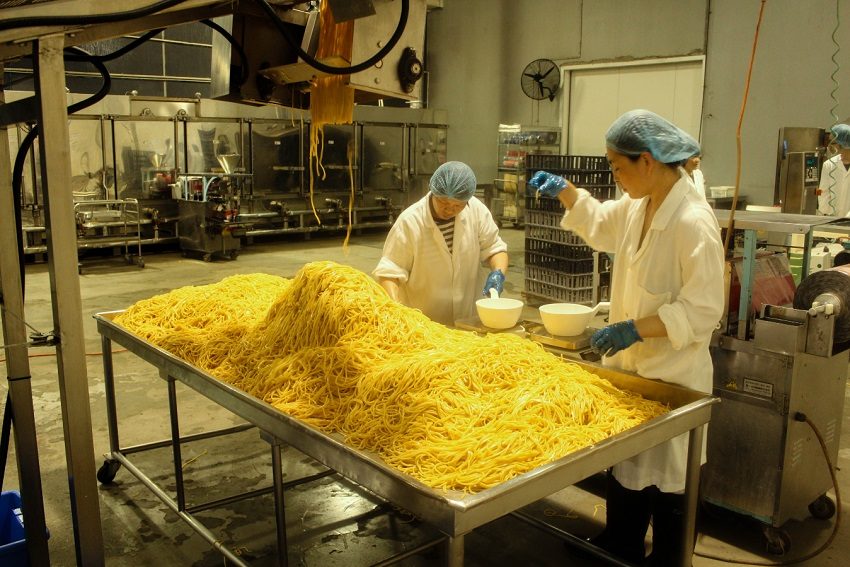Taings: Inside Adelaide's Own Noodle Empire

How an Adelaide family turned their home noodle business into a nationally recognised brand.
Pick up a package of hokkien noodles at your local Woolworths or Foodland and there’s a good chance they were made in a factory on the corner of South and Grand Junction Roads.
The Taings noodle factory was built in 2001 to accommodate growth in the business. Today, the factory is the second largest supplier of fresh noodles in Australia. Their client base includes Woolworths, Foodland, PFD (food service), McCain and Lite n’ Easy. If you haven’t consciously consumed Taings noodles, you probably have without knowing.

“It started in Thebarton, in a house with a family who had migrated from Cambodia,” says Taings’ general manager Steve Hardacres. “Old man Taing started making noodles for the local Chinese supermarkets; just made them and put them in little tied up bags and sold to a few supermarkets and restaurants.
“Around 18 years ago, a couple of Coles managers saw these things in the Adelaide Central Market and thought it would be a good product to put on their shelves, and that’s how it all began.”
Since the move in 2001, the brand has been searching for ways to continue their growth in the noodle market.
“We had a short stint with steamed buns under our brand, which was a dismal failure,” Hardacres says. But he has just instated a new plan, to “export ambient-temperature noodles to Asia”. The noodles are made on a special machine and don’t require any refrigeration.

“There’s a big demand for western foods in China. Buying Australian-made products is seen as a sign of wealth so there’s a big market for Australian products in China,” Hardacres says.
The Taings factory houses a fresh noodle machine, that creates packaged noodles from start to finish. After the noodles are packed they’re pasteurised before being chilled and ready to distribute. Their ambient-temperature noodle machine runs alongside the fresh one. It prepares the noodles for local distribution and export.
“There’s a difficulty in exporting fresh noodles,” Hardacres says. “They only have a 45- day shelf life so it’s not feasible by the time they’ve arrived in the destination country and made it on to the new shelf. You could freeze them, but fresh noodles don’t hold up well (three months at most). So that’s why the ambient-temperature noodles are our next step in the growth plan.”

The company’s most popular noodle is the hokkien, which dominates their production line. Others include soba, udon, rice and purple wheat noodles, which are all available on request.
“We don’t make atypical noodles as a standard line because the demand isn’t high enough. But occasionally we’ll have orders for promotions, say if someone wants to sell soba noodles for a month they might ring and order 500 kilos.
“Originally we had 10 products in constant production. Now we’re down to two. If we’re taking steps like developing packaging and producing the product, convincing suppliers etc. and it’s not a massive hit, we’ve lost money.”

Although noodle making is a fairly straight-forward game, there’s plenty to consider outside the production line. Balancing costs on freight, and promotional sales (the supermarket doesn’t absorb half-price discounts, the producers do), bargaining on sales deals and growing the company is something Hardacres has been doing for the past 15 years.
“Some days there are no noodles to be sent out, but the next day there might be 10 pallets. Some of our clients order noodles dependent on their own production line. They give us a three- to four-month forecast which helps, but they might order three tonnes today then nothing for the next few weeks. We really don’t know what’s going to come in.”
Photography: Camellia Aebischer